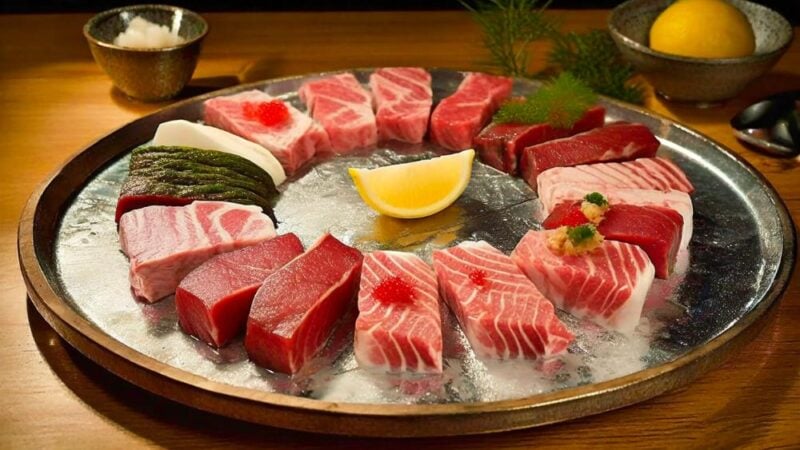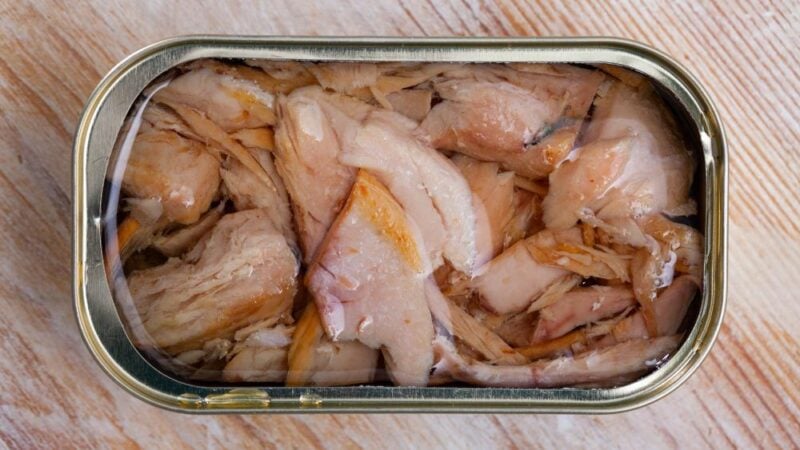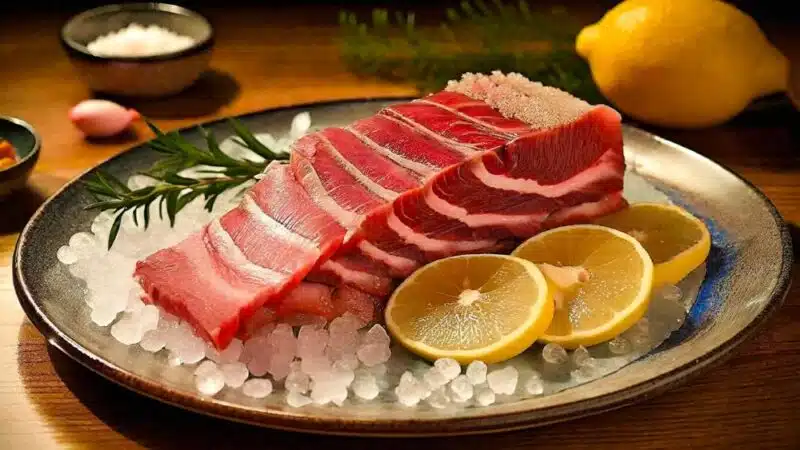As always when talking about fish, remember to make sure you're buying a fresh, high-quality product from a known source . The best way to check this? Appearance and aroma will give you the first and most important information.
In the case of the belly, it should also be white to slightly pink or pale beige . If you can handle it, it should feel firm but tender to the touch.
Content table
On the belly
The belly is a highly prized part of several types of fish, especially tuna, and is characterized by its tender texture and delicate flavor . It is found in the abdominal area of the fish, specifically in the ventral region, hence its name.
It's known for being fattier and juicier than other parts of the fish, making it a delicacy in the kitchen . Although the quality and flavor can vary depending on the species, in general, this part tends to be more tender and juicy than other parts of the fish. It's also used in a variety of recipes, from roasted and grilled dishes to preserves and pickled dishes.
The special tuna belly
This is widely considered the most valuable. Tuna is a large, muscular fish, and the accumulation of fat and natural oils in its belly gives it a tender texture and exceptionally delicate flavor.
Tuna belly is used in a variety of preparations, from sushi and sashimi to canned fish, and is a key ingredient in haute cuisine . However, it's not limited to tuna; it's also found in other types of fish, such as bonito, swordfish, and cod.

Do not confuse melva with belly
Both are parts of the tuna fish used in cooking, but they are distinct. The ventresca (belly) is a specific section of the tuna's abdominal area , located on the underside of the fish. The melva (fried tuna) refers to a part closer to the head of the tuna , which is less fatty and has a more robust and less delicate flavor.
The main difference lies in their fat content . The belly is known for being the fattiest and juiciest part of the tuna, while the melva has less fat and, consequently, a firmer texture and a less bland flavor. This makes them suitable for different types of culinary preparations.
The ventresca (fish belly) is appreciated in delicate, raw dishes such as sushi, maki , and sashimi, as well as in high-quality preserves. The melva (bullhead), on the other hand, is preferred in dishes requiring a more intense flavor, such as stews, soups, and grilled dishes.
Why is tuna belly more expensive than other tuna?
Tuna belly generally has a higher value than other parts of the tuna due to its unique characteristics. This difference in value is primarily due to its higher fat and natural oil content, which gives it an incredibly tender texture and a mild, delicate flavor .
The natural oils and fats present are highly desirable in cooking, as they add exceptional juiciness to dishes and enhance their flavor. In contrast, other parts of the tuna, such as the loin or the neck, are leaner and have a firmer texture.
While these parts of the tuna are also valuable and used in a variety of culinary preparations, such as sashimi, fillets, and canned food, their price is typically lower on the market due to their lower fat content and different texture.
Follow on Instagram ( here )
and on YouTube that I upload new videos every week ( click here )
7 important facts about ventresca
- Variety of uses : Tuna belly is used in a wide range of culinary preparations, from sushi and sashimi to preserves in olive oil. It's a key ingredient in haute cuisine and is prized for its ability to enhance the flavor of dishes.
- Different species : Although tuna belly is the most well-known, this part is also found in other fish species, such as bonito, swordfish, and cod. Each species contributes distinct nuances in terms of flavor and texture.
- Fishing economy : Tuna fishing for belly is an important part of the economy of many coastal regions, such as Spain, Italy, and Japan. It is often exported and appreciated worldwide.
- Preservation : Tuna belly is best preserved in olive oil, which helps preserve its texture and flavor. This preservation method has been used for centuries and remains a popular technique in the production of high-quality preserves.
- Nutritional Benefits : Tuna belly is an excellent source of heart and brain health benefits. It's also rich in high-quality protein and other essential nutrients.
- Canned fish : Pay attention to the brand and quality of the oil or liquid used. Choose reputable brands that use high-quality olive oil to preserve the fish.
Labels and certifications : Look for labels indicating that the product is sustainably fished or meets quality standards. Sustainable fishing certifications, such as the MSC (Marine Stewardship Council), are a good sign that you're purchasing a responsible, high-quality product.






